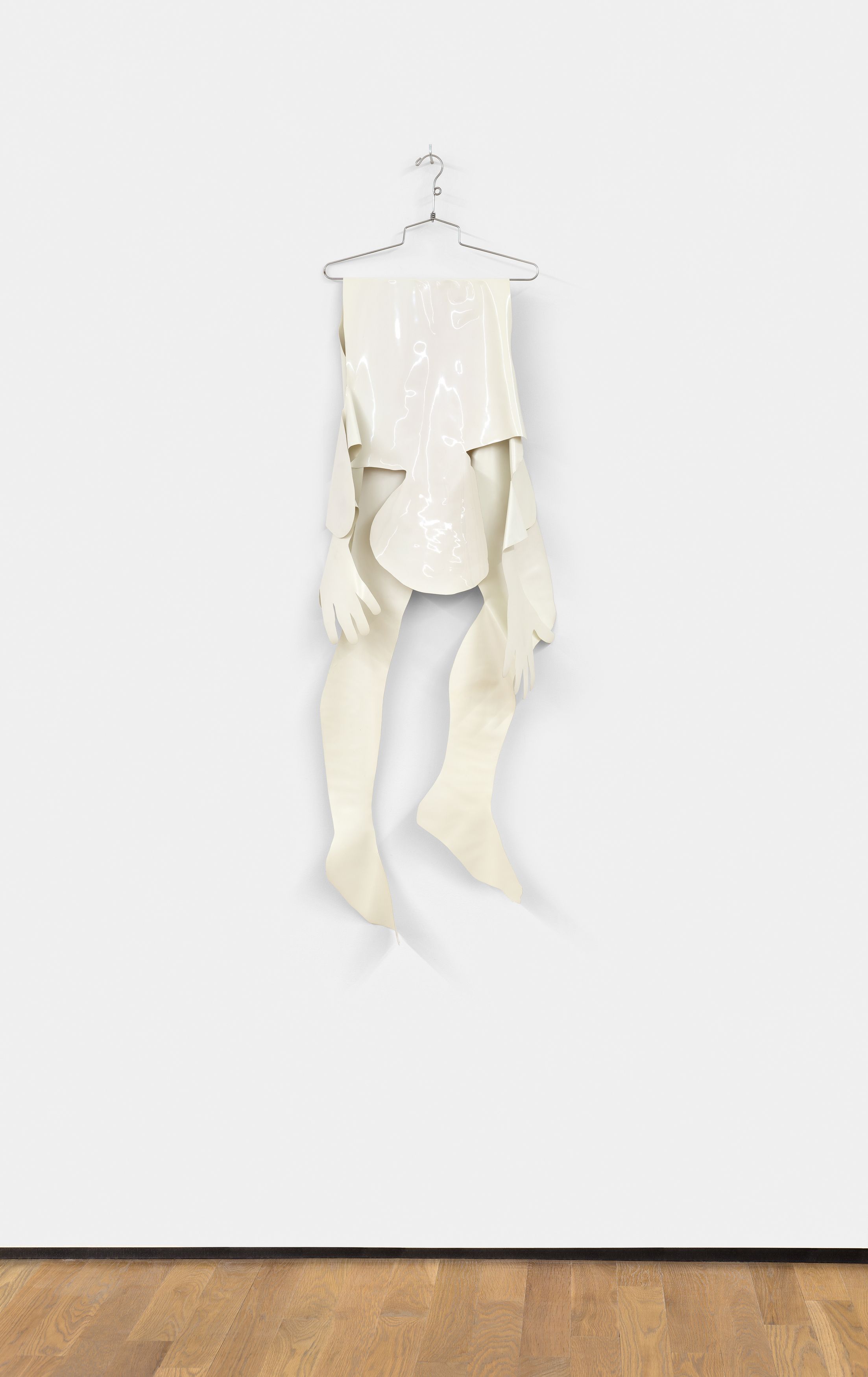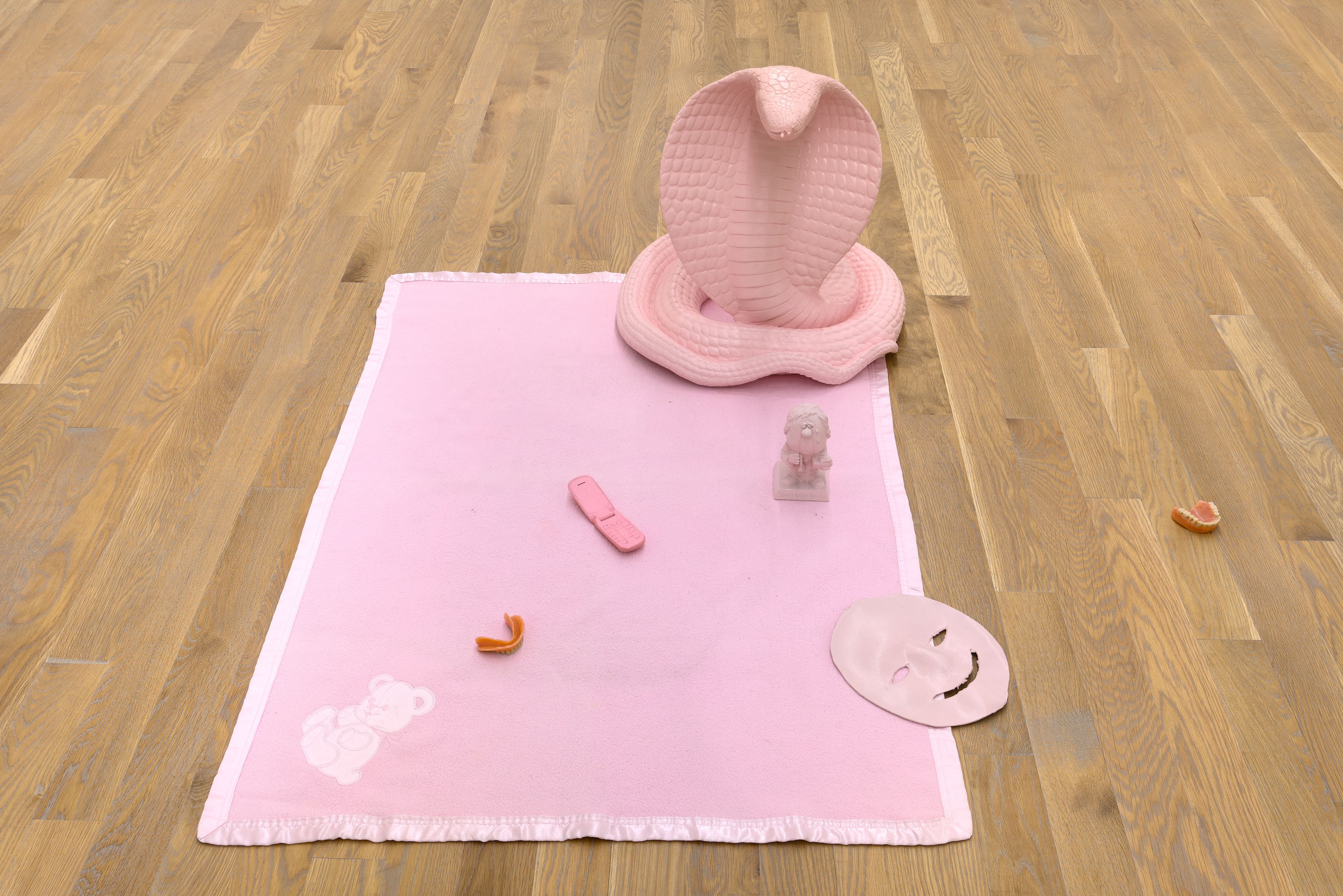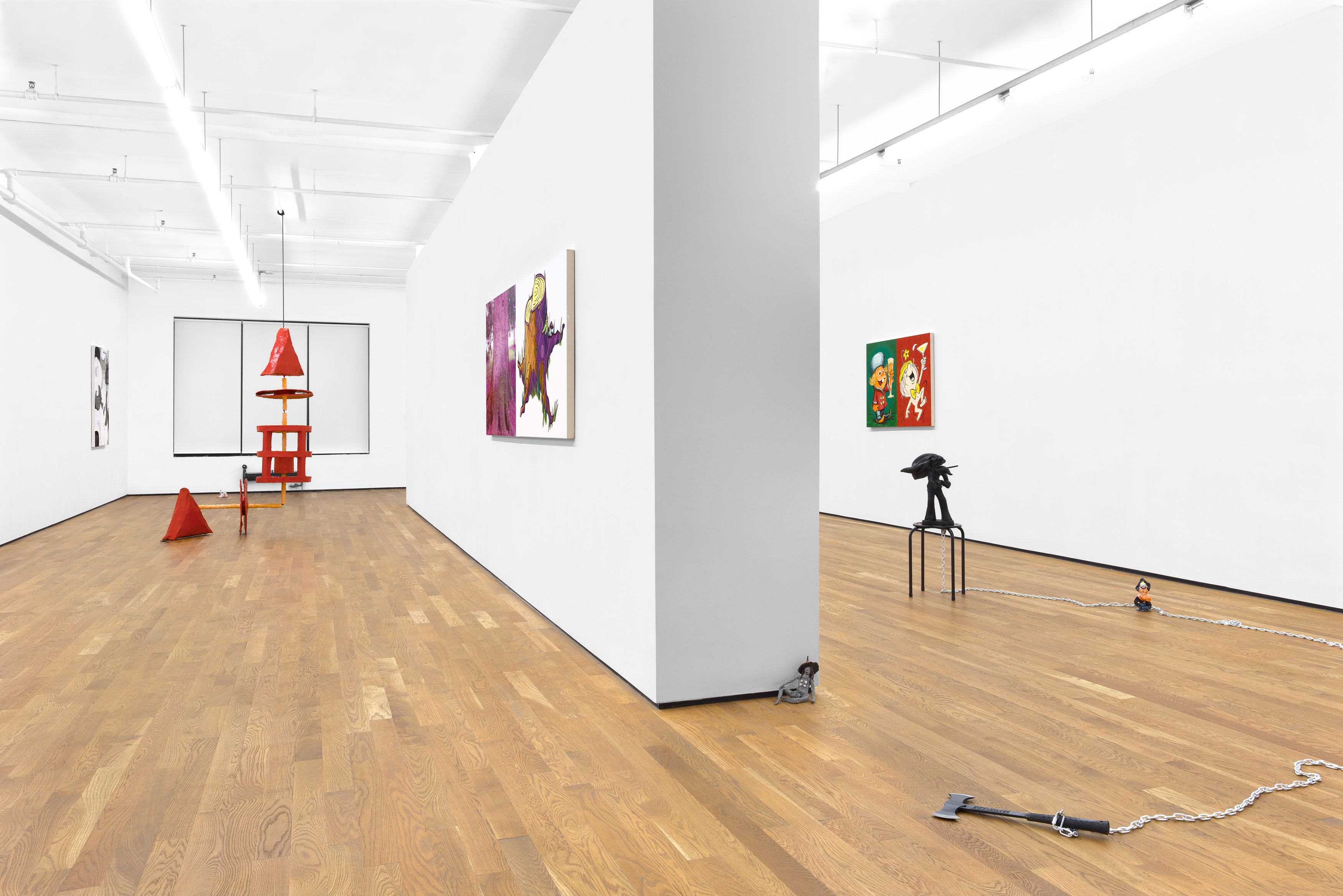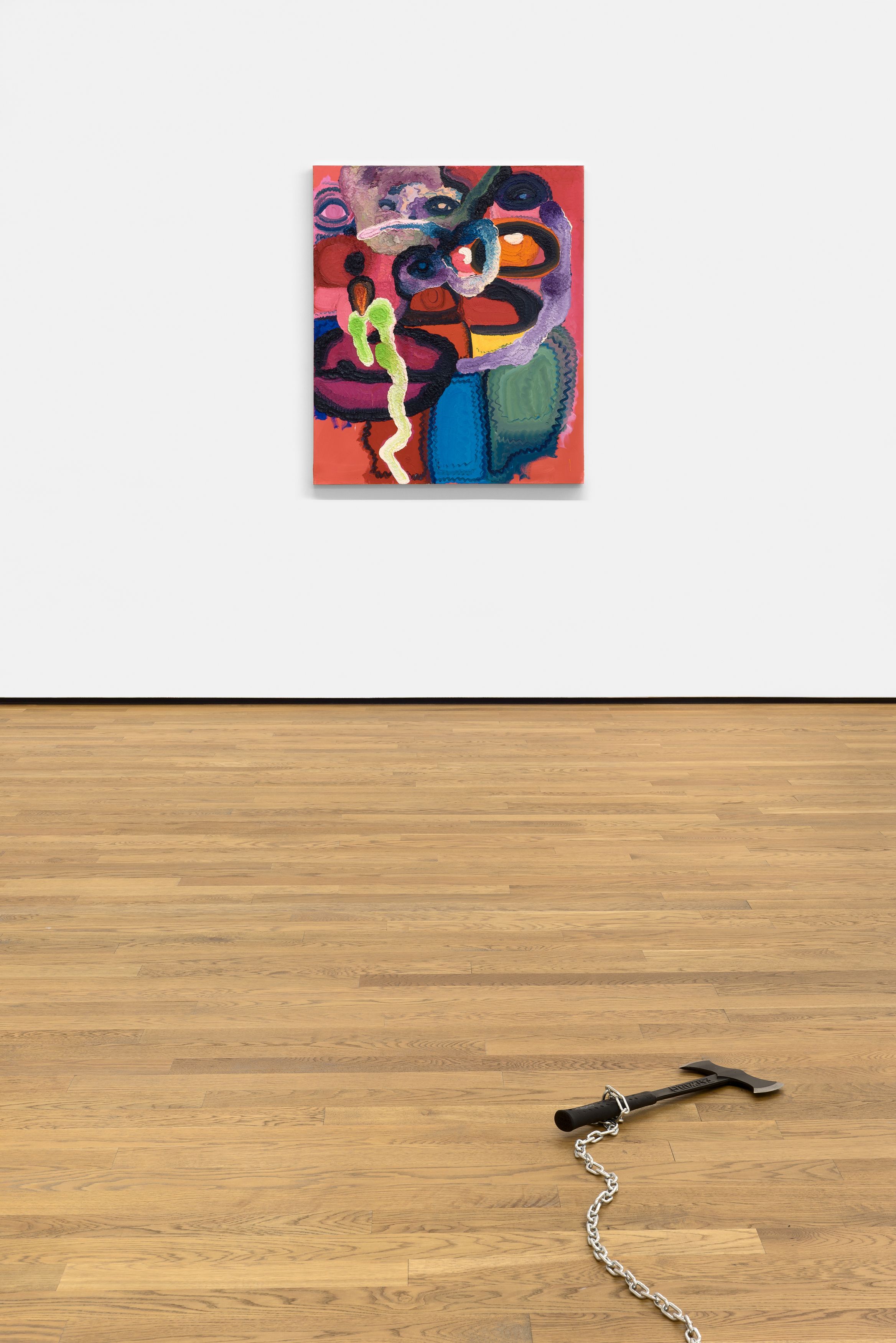Cindy Ji Hye Kim
Kiki Kogelnik
Brian Kokoska
Bjarne Melgaard
Chelsey Pettyjohn
Erika Vogt
Julia Wachtel
Curated by John Garcia
14 January 2018 - 11 March 2018Cindy Ji Hye Kim
Kiki Kogelnik
Brian Kokoska
Bjarne Melgaard
Chelsey Pettyjohn
Erika Vogt
Julia Wachtel
Curated by John Garcia
A scene from a movie:
Beatrix is sprawled on the bathroom floor, crying. Her tears are those of exhaustion, of joy, and of trauma.
“She covers her mouth so B.B. won’t hear her crying and get worried or confused.”
A long wall separates her from her child. On one side lays Beatrix, consumed by an overflowing catharsis; on the other sits her daughter, B.B., blissfully watching the 1946 cartoon, The Talking Magpies. Beatrix hopes for this wall to be a barrier, holding back the crashing weight of consequence and emotion from her idle, and seemingly unaffected, child.
“She washes her face in the sink, when she’s presentable, she walks out of the bathroom, jumps on the bed with her baby, hugs her from behind as the two watch Saturday morning cartoons.”
For the moment, it appears that the mother has shielded her daughter from the abyss. Yet for all the care taken by Beatrix to muffle her own cries, she has only made more audible the jangle of the cartoon and its slapstick dialogue. What will happen when, months later, she jumps into bed again to watch the weekend cartoons with B.B. and a rerun of The Talking Magpies plays? Will the opening melody take Beatrix back to her moment of collapse on the bathroom tiles? And what about B.B.? Will she remember her mother’s stifled weeps through the barricade?
As they cuddle side-by-side watching that same lively cartoon play out, will they see it through new eyes? The animated violence now more real than caricature; the conversation suddenly more biting than playful. What has become of this sweet, innocuous cartoon to have made it so cruel and wrong?
-
All quotes taken from original screenplay.
CREDITS
Installation photography: Mark Woods.



















